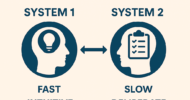One of my patients got admitted this past week. As a new attending, this is still an unpleasant experience. Have I failed? Is there more I could have done to prevent this? I have to say that this particular case wasn’t shocking. The patient hadn’t been doing well lately, and I wasn’t surprised when I got the message that they were on the way to the emergency room.
Due to our electronic medical record system, I’ve been able to follow along with the hospitalization as it’s progressed. It’s been a frustrating experience to say the least. Things started out well. The hospitalist team seemed to be addressing the problem at hand. Labs were improving. Blood pressure was coming up. Then, things started to go haywire.
I read the attending note one morning that said the patient needed an expensive test to further work up their respiratory status. Unbeknownst to this attending, an entire workup for this had already been done by an outside pulmonologist. Unfortunately, our EHR had that information buried as a PDF file in the scanned section of the medical record. It would have taken quite a big of digging through dozens of pages of tucked away outside records to find that.
The expensive test had already been done by the time I discovered it, and the results were exactly the same as before. I shook my head as I looked at the screen. How can this be? We are one of the most aligned health care systems around. We have embraced health care IT and have all the latest and greatest computer systems to show for it.
Despite our health care IT investment, our systems still betray us. If interoperability were truly a pillar of health care IT, then there would be no excuse for the archaic way that health care systems exchange records. The results of the previous pulmonary workup should have been at the fingertips of my hospitalist colleague, not buried in an IT back alley. In reality, EHRs are complex systems designed to fulfill meaningful use requirements and improve billing and collections. While important, these items should not trump patient care.
Beyond EHRs, my relative absence from my patient’s hospitalization, save for logging in occasionally to check on things, stems from an incentive problem in every primary care office. While I love being the quarterback for my patients, I am rarely paid to do this. I would love to think that my presence could have greatly streamlined my patient’s hospitalization. What would it look like if the hospital team actually collaborated with me on a daily basis? What could we accomplish? How much more value could we deliver?
Instead, I sit in my office with little communication from the hospital team until the discharge summary appears in my inbox. I’ll read it through either after office hours or just before the patient comes in for their follow-up because there is no other time allotted for me to do it. All the while, I’ll still wonder if there’s a better way to do this. Is there a way that we can make our system actually reward providers working together for the good of the patient? Is that too much to expect?
Robert Glass is an internal medicine physician at MUSC Primary Care, North Charleston, SC. He can be reached on Twitter @HumorMD.























![Why true listening is crucial for future health care professionals [PODCAST]](https://kevinmd.com/wp-content/uploads/Design-3-190x100.jpg)
![Surviving kidney disease and reforming patient care [PODCAST]](https://kevinmd.com/wp-content/uploads/Design-2-190x100.jpg)
